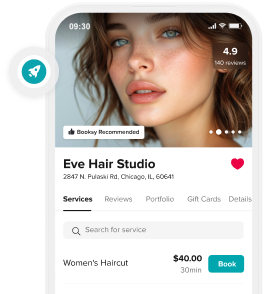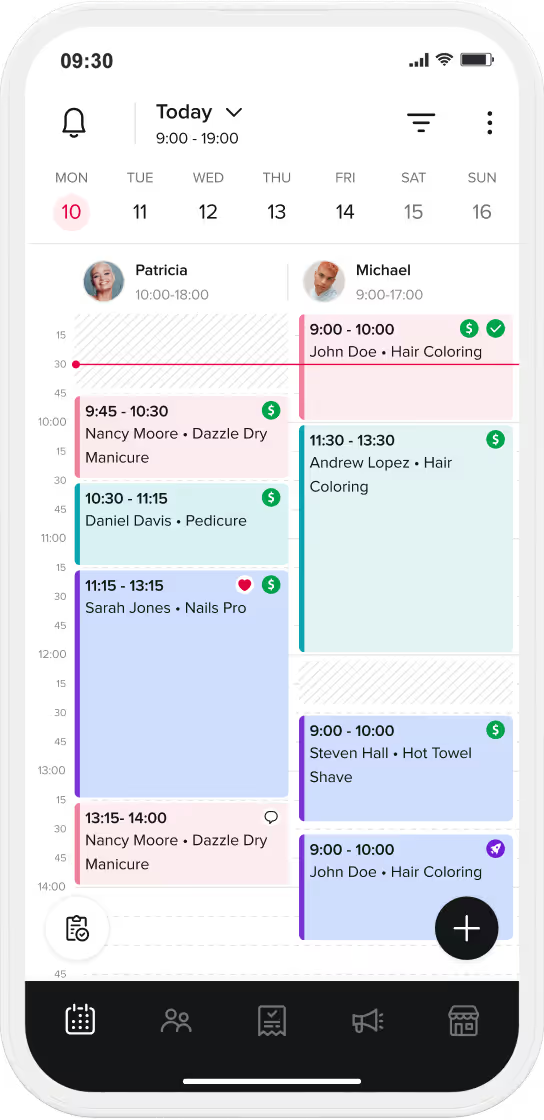Designing an effective stamp card program can be a powerful way for small or independent business owners to increase customer loyalty and retention without incurring significant costs. Here are some tips to help craft a rewarding, cost-effective program:
1. Choosing an Attractive Reward Without Losing Money
- Choose a Reward that Feels Valuable but is Inexpensive: Be sure that the value of the visits needed to earn stamps offsets the cost of the reward itself. For example, offering a small freebie like a discount, a free service upgrade (e.g., upgrade their regular pedicure to a deluxe spa pedicure), a service discount, or a free product can feel like a win for customers while being cost-effective.
- Set a Reward Based on Your Profit Margin: Think about the cost of the reward in relation to your service’s profit margin (after expenses, how much money you’re making from each service). For example, a reward that’s 10-20% off a high-margin service can be sustainable, while giving away an entire free service might be too costly.
2. Setting the Right Number of Stamps or Visits
- Balance the Stamps With Customer Frequency: If clients visit once a month, aim for a reward every 6-10 visits. This encourages repeat business, but isn’t so quick that customers can game the system. You want customers to feel like they’re earning something, but not so quickly that it doesn’t create long-term value.
- Make Sure It’s Achievable: Clients should feel like they can realistically earn their reward. If it takes too long, they might lose interest. If it's too easy, they’ll be less motivated to return for more visits.
- Consider “Pre-stamping” their Card: Pre-stamping cards is a proven psychological trick that increases loyalty program participation and repeat visits (Ex: A 10-stamp card with 2 stamps pre-filled). Studies show that clients are almost twice as likely to finish a pre-stamped card, with completion rates increasing from 19% to 34% [Nunes & Dreze, 2006]. Giving clients a head start with a few stamps can motivate them to complete the card and stay loyal, without altering the effort required. You can take advantage of this by simply increasing the overall number of stamps needed to redeem a reward. If you’ve determined that 8 visits are required to earn the value of the reward, you can offer a 10-stamp card with 2 stamps already filled, making your program almost twice as effective.
3. Expiration of Stamps or Cards
- Add a Sense of Urgency: It’s common to add an expiration date to encourage clients to redeem rewards sooner rather than later. For instance, offer a 6 or 12-month window to complete the card, so they keep up their visit frequency. Make sure the time given is realistic compared to the number of stamps you’re requiring and the typical frequency of the services you offer.
- Offer Extensions for Special Occasions: Consider offering one-time extensions (e.g., “We’ve extended your stamp card for an extra 30 days because you’re such a loyal client!”) to show appreciation while encouraging customers to come back sooner.
4. How to Promote your Program
- Your Physical Space: Display the program in your business with visible signs or at the counter. Make it easy for clients to join and start immediately with a stamp for that day’s visit.
- Social Media & Email: Announce the program on your social media and through text and email marketing, reminding clients of the rewards and how to sign up. Highlight clients who’ve earned rewards to foster a sense of community.
- During Service: Integrate the loyalty program into your client's service as a personal invitation. For instance, you could say, "Just so you know, book 10 visits and you'll receive a free product! You've already earned a stamp for today's visit!" This can also be done effectively at checkout, which is a common way to promote your loyalty program.
5. Who Should be Eligible for Your program?
This will depend on your business needs and goals for your program. You can offer it to everyone to encourage and reward loyalty, or choose only new clients if you’re focused on building clientele.
- Target Only New Clients: A loyalty program can be a great way to turn new clients into regulars. Help build the habit and client relationship in the early days with an enticing reward. By the end of their stamp card, you will have established a lasting connection. A higher value reward can make sense for this structure to create an early relationship with a client.
- Appreciate Your Loyal Clients: A loyalty program can be a great way to show your appreciation to existing clients. As a thank you for their repeated business, you can periodically give them an extra reward. For this group, offering a free service upgrade or a discount on a new service they haven’t tried before can help expose them to more of your services and make them feel special.
- Open to All Clients: It makes sense to reward loyalty at all stages of your customer journey, as long as it works for your business! Long-time clients feel appreciated when they receive special perks, and new clients may be motivated to return to earn rewards.
6. Track and Measure the Impact
- Measure the Return on Investment (ROI): Track how many repeat visits you’re getting from stamp card users and see if you’re bringing in new customers or increasing retention.
- Adjust as Needed: Don’t be afraid to adjust the number of stamps, rewards, or expiration dates based on customer feedback and your business’s performance. A great program should bring in a lot more money and value than it costs your bottom line.
By designing a thoughtful stamp card program that aligns with your business goals and customer behaviors, small business owners can create lasting customer loyalty while staying financially sustainable.

.png)


